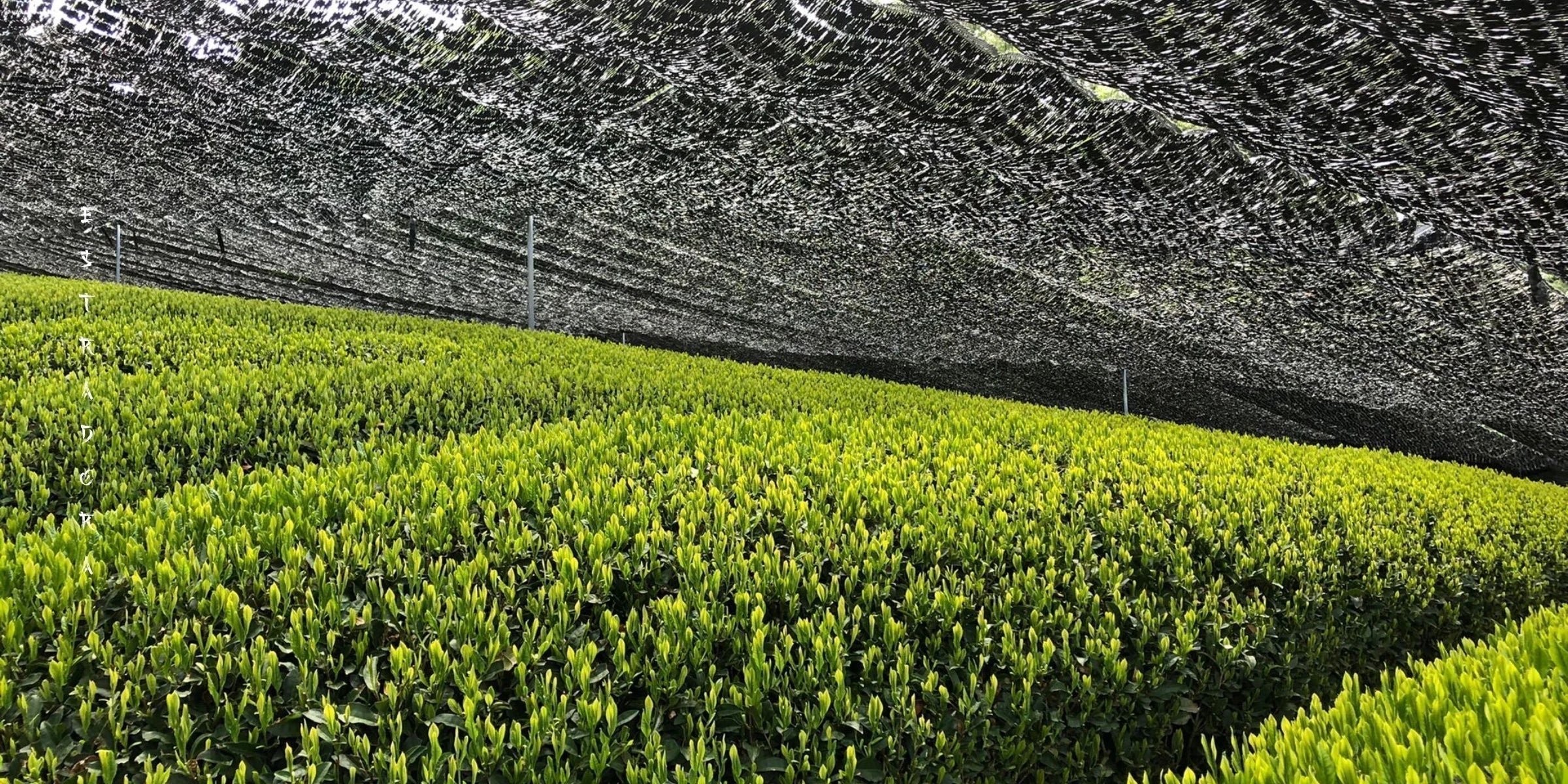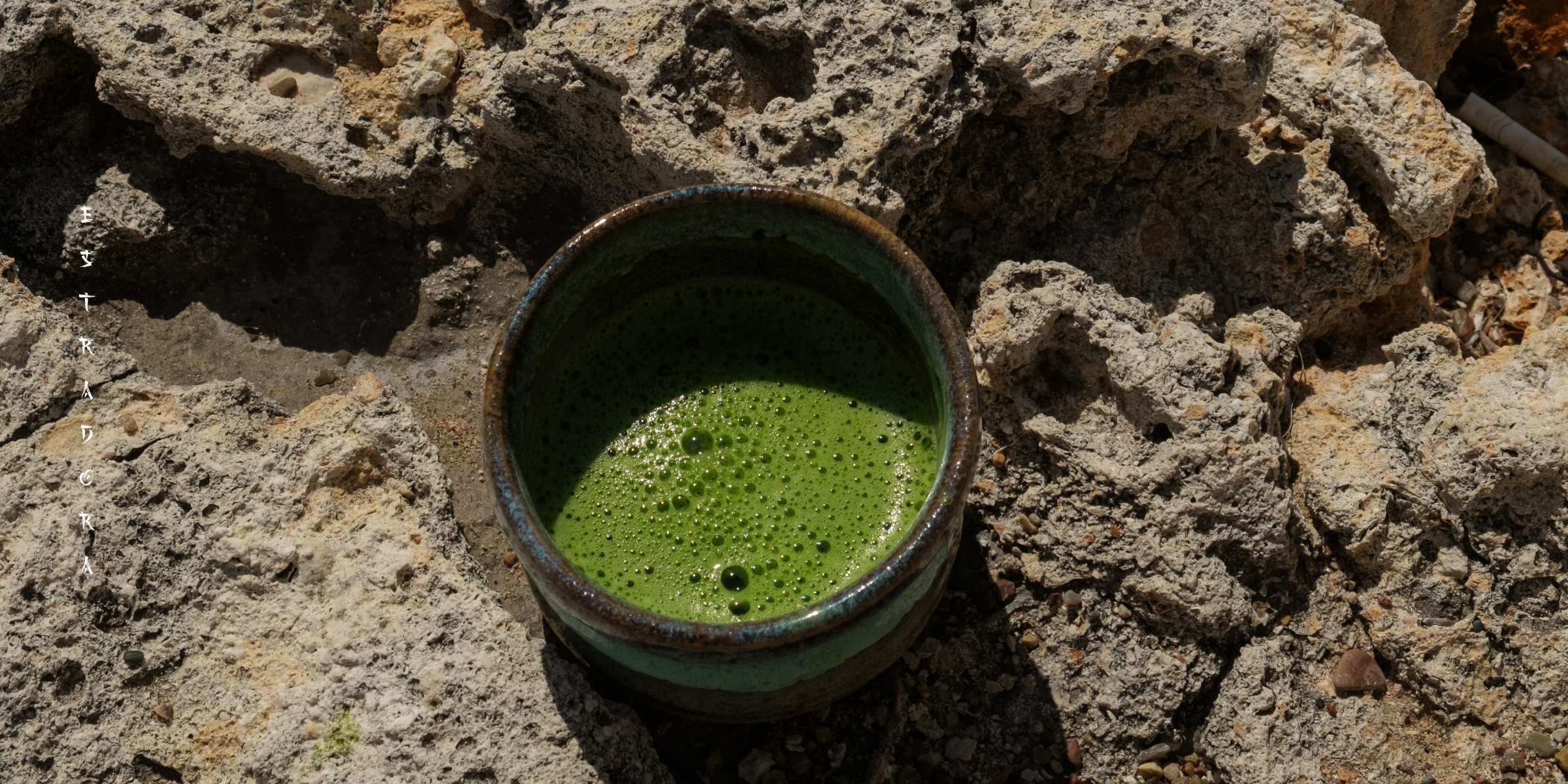
How Matcha Is Made: Matcha Processing Process & Production Steps
Matcha is the result of many small, deliberate steps. Every stage in its production - cultivation, steaming, drying, and grinding - influences the final balance of flavor and color. The methods used today follow the same principles that have guided traditional matcha making for centuries.

1. Shade Cultivation
Several weeks before harvest, tea bushes are covered to block most of the sunlight — usually for 20 to 30 days, sometimes longer for high-grade teas. The shading nets reduce light exposure by 85–95%, slowing photosynthesis and increasing the production of chlorophyll and amino acids such as L-theanine and glutamic acid.
As a result, the leaves develop a deep green color and a mellow, umami-rich taste. The total amino acid content in shaded tea can reach up to 3–4 % of the dry weight — almost twice as high as in unshaded green teas. This stage defines the smooth, balanced flavor that distinguishes true matcha from ordinary powdered tea.
2. Harvesting
Only the youngest, most delicate leaves from the first spring flush are picked. Typically in late April to early May. These tender leaves contain higher concentrations of amino acids, sugars, and chlorophyll, and lower levels of catechins and fiber.
Mature or coarse leaves are never used. Timing is critical: the interval between harvest and steaming must be kept within a few hours to prevent oxidation, which would dull both flavor and color. The freshness of this step determines the purity of everything that follows.
3. Steaming
Immediately after picking, the leaves are steamed for about 15 to 20 seconds. This quick process halts enzymatic oxidation and locks in the vivid green color. It also preserves the natural volatile compounds that create matcha’s fresh, grassy aroma.
Steaming maintains a high level of chlorophyll and L-theanine while minimizing catechin conversion — keeping bitterness low and sweetness intact. After steaming, the leaves are cooled with cold air and gently dried to remove surface moisture.
4. Drying and Sorting
Once cooled, the leaves are dried under carefully controlled airflow and temperature, typically below 100°C to prevent color loss. Stems and thick veins are removed, and the soft leaf material is sorted by texture and size.
At this stage, the product is called aracha (an unfinished, raw tea). Clean sorting ensures that only uniform, flexible leaves continue to the next phase, which is key to achieving an even, fine powder later in production.
5. Refining into Tencha
Aracha is refined into tencha, the pure base used for matcha. Remaining stems, veins, and fibers are removed so that only the thin, flat leaf flakes remain. Tencha is stored in a cool, dark environment to protect its chlorophyll and delicate aroma.
Proper refining ensures a smooth texture and a clean, vibrant color. The foundation for high-grade matcha powder.
6. Final Drying and Storage
Before grinding, tencha is gently dried again to achieve an optimal moisture content of around 3–5%. This prevents clumping and reduces heat generation during milling. Many producers store tencha refrigerated or frozen to preserve its vivid color and delicate flavor until the exact moment of grinding.
Even small temperature fluctuations can alter the tea’s balance of amino acids and chlorophyll, so this quiet stage is treated with great care.
7. Stone Grinding
In traditional matcha making, tencha is slowly ground between granite stones to produce a fine, smooth powder. The slow movement prevents heat buildup and oxidation, preserving the tea’s natural sweetness and bright green color.
Each mill produces only a small amount of matcha per hour, emphasizing the precision and patience behind this stage. Immediately after grinding, the powder is sealed in airtight, lightproof containers to protect it from oxygen, humidity, and light.
8. Quality Control
At every stage, producers monitor color, aroma, texture, and chemical composition. The balance between chlorophyll, amino acids, and catechins determines the character of the final matcha.
High-quality ceremonial matcha typically contains:
Amino acids (including L-theanine): 2–4 %
Catechins: 6–10 %
Caffeine: 2–3 %
Chlorophyll: 1–2 %
Because matcha is consumed as a whole-leaf powder, purity and freshness are essential. Even slight oxidation can affect taste, color, and foam stability during whisking.
Conclusion
The matcha-making process is a precise sequence: shading, harvesting, steaming, drying, refining, grinding, and careful packaging. Each step protects the tea’s natural color, preserves its amino acids, and maintains the gentle balance of umami and freshness.
Understanding how matcha is made helps us appreciate its quiet complexity. A craft built on centuries of attention to detail, carried through every leaf, every movement, every cup.

